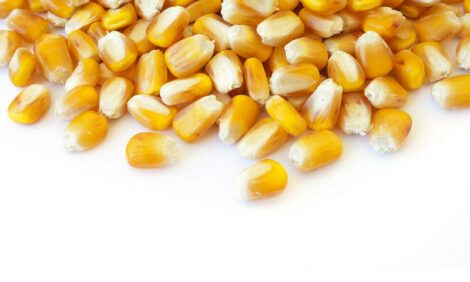



Cost-Effective Genomic Selection for Pig Feed Efficiency
For the pig industry, feed is the largest cost of production, accounting for about 65% of the total cost. Breeding feed efficient pigs is an important tool for a pig breeding company to assure its continued competitiveness and success, writes Chunyan Zhang, PhD, Postdoctoral Fellow, University of Alberta and Genesus Inc.In the past decades, traditional estimated breeding values (EBVs) derived from pedigree information and recording of lean growth performance (including feed intake) have resulted in continuous genetic improvement for pig feed efficiency.
However, there are several limitations to genetic improvement for feed efficiency because feed intake phenotypes are difficult and expensive to measure and thus are only measured on a portion of the selection candidates.
The use of genomic breeding values (GEBVs), estimated using a large number of genetic markers (e.g. Single Nucleotide Polymorphisms, SNP) across the genome, will enhance the genetic gain in the future.
With the rapid development of genomic technology and associated statistical methodology, pig SNP genotypes can be obtained from different density SNP chips, such as the latest Affymetrix 650K, Geneseek-Neogen GPPHD 80K, Illumina 60K and GGP-Porcine 9K, which provide great choice for pig breeders to design the breeding program by making good use of the enhanced GEBVs.
A successful genomic breeding program is largely based on the accuracy of the GEBVs which depends on the number of animals that have both a phenotype of the trait(s) of interest and high density (HD) SNP (i.e. 80K and higher) genotype.
The relatively high genotyping cost per animal currently limits the widespread commercial use of HD genotypes for implementation in pigs because a large number of selection candidates would need to be genotyped.
Imputation is a promising technology to combine information from marker panels of different densities. It uses empirical or statistical rules to predict higher density SNP genotypes from lower density SNP genotypes.
Imputation allows more animals with HD SNP genotypes to be included in breeding programs at a lower cost. However, the accuracy of imputation is influenced by several factors, including the number of markers on the low density SNP chip, the number of individuals that are genotyped at high density SNP chip and the number of high density genotyped relatives of the individuals to be imputed.
In practice, the best strategy for imputation is to increase the number of the close relatives (e.g. common ancestors) in the HD SNP genotypes to maximize their genetic contribution to the gene pool of the target imputation population.
Recent research (Huang et al., 2014; Cleveland and Hickey 2013) showed that the cost of genotyping could be greatly reduced by genotyping selection candidates for a small density panel and then imputing to 60K, plus sires and grandsires for a higher density 60K panel resulting in a small reduction in accuracy of GEBV.
In a recent large scale breeding project on Duroc feed efficiency, Genesus has genotyped over 170 common ancestors (sires, grandsires, great-grandsires and other key ancestors) with the latest pig HD SNP panel (650K) for imputation of their progeny from 80K to HD. The imputation accuracy reached 92% on average among both SNPs and animals.
In pigs this is one of the first large implementation trials for imputation of genotypes to HD for genomic selection. The favorable imputation accuracy will potentially speed-up the wide use of this invaluable technology in the Genesus breeding program, and ultimately benefit Genesus customers.
Previous genome-wide evaluation of pig populations was based on 60K SNP genotypes, either from real or imputed. The primary work was for pig reproductive traits and showed increased accuracy of breeding value using genomic information compared to using only pedigree information indicating the overall return on investment to implement genomic selection was very positive (Cleveland et al. 2010).
Recent research results for genomic prediction of feed efficiency using combination of real and imputed 60K genotypes showed the accuracy of GEBV was in a range of 0.094 – 0.532 for feed efficiency component traits (Badke et al., 2014; Jiao et al., 2014; Do et al., 2015). With the recent availability of HD SNP panel (650K) in pigs, enhanced GEBV is anticipated as more markers will be included in the prediction model.
Currently, Genesus has implemented a large-scale genomic selection project focusing on feed efficiency in the Duroc population. The accuracy of genomic prediction for feed efficiency component traits using real 80K SNP genotypes ranged from 0.14 to 0.71. When the SNP genotypes were imputed to the higher density (650K), the accuracy of GEBVs was increased.
The ultimate purpose of this project is to enhance the GEBV for feed efficiency by incorporating SNP genotypes of 80K and 650K with imputation technology.
Improving genetic gain at the nucleus level has an important impact on the large commercial populations sourced from them and can make genomic selection economically feasible. These significant findings will further reduce production costs for Genesus customers and contribute significantly to the Genesus goal of improving customer profitability.
References
Badke Y.M., et al., 2014. Accuracy of Estimation of Genomic Breeding Values in Pigs Using Low-Density Genotypes and Imputation. G3, 4(4):623-31.
Cleveland M., et al., 2010. Prediction of Genomic Breeding Values in a Commercial Pig Population. http://www.kongressband.de/wcgalp2010/assets/pdf/0266.pdf
Cleveland M. A. and Hickey J. M., 2013. Practical implementation of cost-effective genomic selection in commercial pig breeding using imputation. J. Anim. Sci., 91:3583–3592.
Do D.N., et al., 2015. SNP annotation-based whole genomic prediction and selection:1 An application to feed efficiency and its component traits in pigs. J. Anim. Sci., 93:2056–2063
Huang Y. et al., 2014. Assessment of alternative genotyping strategies to maximize imputation accuracy at minimal cost. Gen. Sel. Evol., 44:25
Jiao S. et al., 2014. Feed intake, average daily gain, feed efficiency, and real-time ultrasound traits in Duroc pigs: I. Genetic parameter estimation and accuracy of genomic prediction. J. Anim. Sci., 92:2377–2386
December 2015









